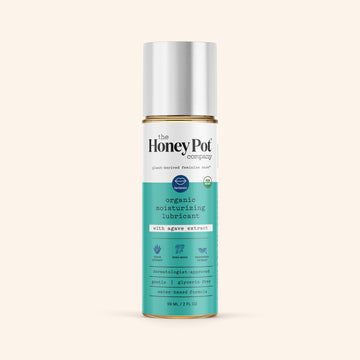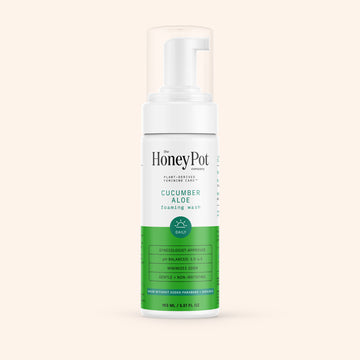Ever paused mid-day, feeling that twinge of "something's up" with your honey pot? Well, that’s your body talking, and it’s time we tuned in — especially when it comes to Pap smears.
Whether you're rocking a routine or navigating life’s changes, your cervix deserves some VIP treatment. Why? Because catching something off-kilter early on can save a whole lot of hassle later.
In this article, we’re diving deep into the ins and outs of Pap smears to uncover how often to get them, why they’re non-negotiable, and what you can expect when you're in the exam room. So, if you’re ready to get clued up and clear on keeping your cervical health in check — keep reading!
What Is a Pap Smear?
A Pap smear, also known as a Pap test, is essentially a health screening superhero for your cervix. During this simple yet incredibly important exam, a healthcare provider gently collects a sample of cells from your cervix — the doorway between your vagina and uterus — using a small tool called a speculum to get a good look and a soft brush or swab.
This isn't just any routine check; it’s a specialized move to make sure your cervical cells are throwing a party that’s safe, not sorry. Think of it as a regular health check-up, but specifically for the part of you that’s all too often hush-hush in daily chit-chat.
Why Are Pap Smears Important?
So, why exactly is a Pap smear a must-do on your health checklist? Aside from giving your cervix the love it deserves, here are some solid reasons why this screening test is a cornerstone of your healthcare strategy:
Cervical Cancer Screening Test
First things first, Pap smears are the MVP when it comes to screening for cervical cancer. By catching those sneaky, abnormal cells early, this test can literally be a lifesaver. It's all about spotting those changes before they get a chance to turn into a bigger problem.
Monitor HPV Health
Considering human papillomavirus (HPV) is a key player in most cervical cancers, understanding your HPV status is crucial. A Pap smear often includes HPV testing, which checks for the virus that can lead to those risky cell changes. Knowing whether you're at a high risk for HPV-related complications helps tailor your follow-up care and prevention plan.
Early Detection Equals Easy Management
Catching abnormal or precancerous cells early often means easier, less invasive treatment. Early detection through routine Pap smears can lead to interventions that are not only less drastic but also more effective.
Guidelines for Health
Regular Pap smears help your healthcare provider track changes over time, giving them insights into how best to manage your overall reproductive health. This is especially important if you have risk factors like a weakened immune system, a history of cervical cancer, or exposure to diethylstilbestrol (DES).
Peace of Mind
Last but certainly not least, knowing you are proactive about your cervical health can bring immense peace of mind. Regular screenings mean you're taking control of your health narrative and staying ahead of any issues that might arise.
What Can You Expect in the Exam Room for a Pap Smear?
You've marked your calendar, chosen your most comfy socks (because why not?), and are headed to your healthcare provider's office for a Pap smear. What can you actually expect once you hit the exam room?
Here’s a breakdown of how it goes down:
Meet and Greet
First, you’ll have a chat with your healthcare provider. This is your chance to voice any concerns, discuss any symptoms you might be experiencing, or bring up questions about the procedure. It’s like a pre-game huddle with your doc to make sure you’re both on the same page.
The Setup
You'll be shown to the exam room, where you’ll get a moment to change into that oh-so-glam hospital gown. You’ll then be asked to lie down on the exam table, usually with your feet in stirrups — yep, it’s as awkward as it sounds, but hey, it gets the job done.
The Speculum Introduction
Enter the speculum — a tool designed to get a clear view of your cervix. It might feel a bit weird as it's inserted, but it shouldn't hurt. Think of it as slightly uncomfortable but totally bearable. Your doc uses this to gently open the vaginal walls.
The Main Event
With the speculum in place, your provider will use a small brush or a swab to collect a sample of cells from your cervix. It’s super quick and painless — like, blink-and-you-miss-it quick. This sample is what gets sent off to the lab to check for any abnormalities, precancerous cells, or types of HPV that might be lurking.
All Wrapped Up
Once the sample is collected, the speculum is removed (aah, relief!), and you’re pretty much done. Your doctor will likely give you a rundown of what to expect next, like when you’ll get your Pap test results and any follow-up steps if they spot something that needs a closer look.
Aftercare
You might feel a bit of spotting after the exam; it’s totally normal. Just another part of the adventure, right?
So, When Should You Head Back for Another Pap Smear?
Navigating when to book your next Pap smear can seem like decoding a secret calendar, but it's actually pretty straightforward.
Here's the scoop:
- General Guidelines: Most women should start Pap smear screenings at 21 years old and continue every three years if their test results are normal. Once you hit 30, you might shift to every five years if you include HPV co-testing and your results stay on the sunny side.
- Risk Factors: If you have a history of cervical cancer, are HIV positive, have a weakened immune system, or if previous tests have shown high-grade cell changes, your OB-GYN might pencil you in more frequently. It’s all about keeping a close watch to catch any sneak attacks early.
- Post-Hysterectomy: Had a total hysterectomy that wasn’t due to cancer? You might be off the hook for Pap smears. However, if your hysterectomy was due to cancer or abnormal cells, keep those appointments rolling as recommended by your healthcare provider.
Following these screening guidelines ensures you're giving your cervix the attention it deserves, catching potential issues way before they become headline news in your life.
Conclusion
Here at The Honey Pot, we're all about keeping you feeling fabulous and confident — from your head to your vulva. Pap smears might not be the most glamorous part of your health routine, but they're absolutely necessary. They're your secret weapon in the fight against cervical cancer, a wingwoman in your wellness journey, making sure you stay healthy, happy, and thriving.
So, don’t put it off — book that appointment and take charge of your health with the confidence of knowing you’re doing what’s best for your body. And remember, your cervix is counting on you. Stay proactive, stay empowered, and let’s keep that vibrant health vibe going strong!
Sources:
What Should I Know About Cervical Cancer Screening? | CDC
Guide To Cervical Cancer | American Cancer Society
Cervical Cancer Screening | The American College of Obstetricians and Gynecologists (ACOG)
Definition of total hysterectomy | NCI Dictionary of Cancer Terms





